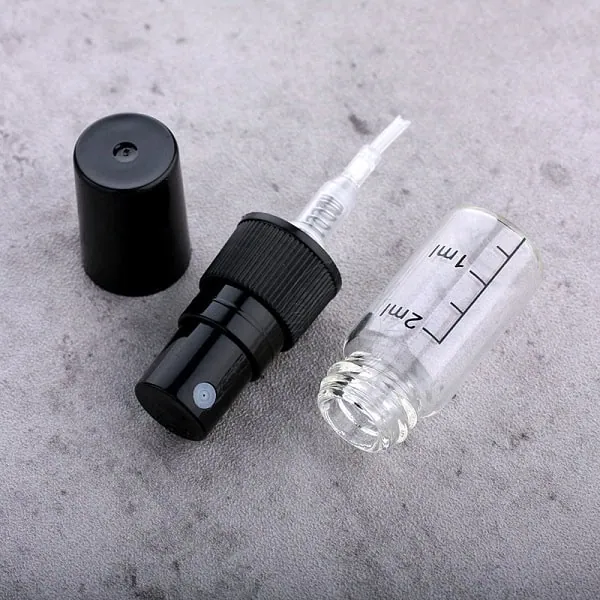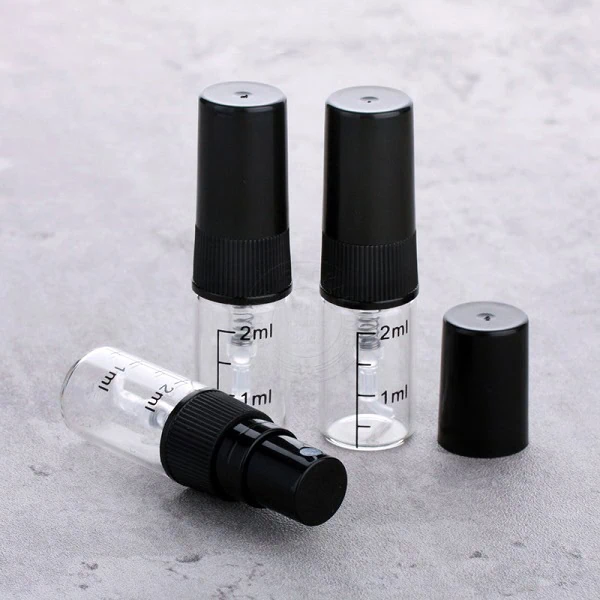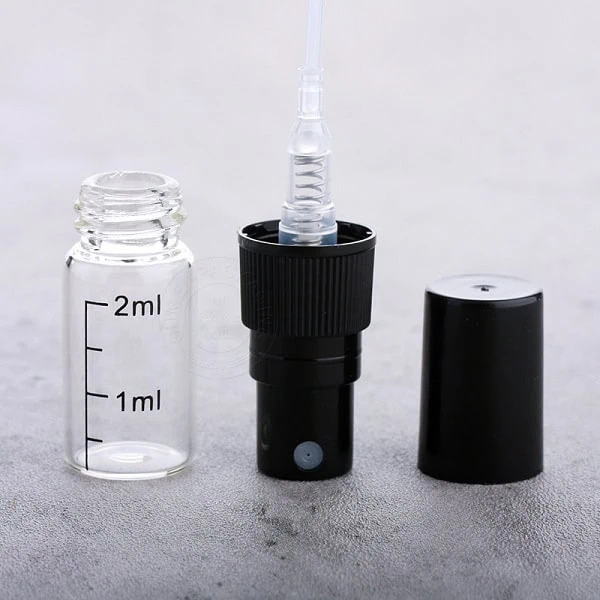The secret to a great fragrance isn’t just the scent—it’s also in the design of its bottle. A well-designed perfume bottle can elevate a product, transforming it into a luxury item.
The anatomy of a perfume bottle includes the cap, spray head, collar, pump, dip tube, and the bottle itself. Each component is essential for preserving the fragrance and ensuring a perfect application. The bottle’s design can influence the product’s quality and its shelf appeal.

It may seem like just a container for a lovely scent, but a perfume bottle is a sophisticated piece of engineering. Every single part works together to deliver the perfect mist and keep the fragrance fresh. As someone who has spent years in this industry, I have seen firsthand how much thought goes into creating a high-quality bottle.
What Are the Parts of a Perfume Spray Bottle?
You might not think about it, but a perfume bottle is more than just a glass container. It is a carefully engineered system designed to protect and apply fragrance. Understanding its parts helps you appreciate the craftsmanship and technical detail that go into making a great product.
A perfume spray bottle consists of a cap, a spray head, a collar, a pump, a dip tube, and the glass bottle. These components work together to seal the fragrance, create a fine mist, and allow for controlled application. A high-quality pump is crucial for a consistent spray.

Every single part of a perfume bottle has a job. The cap protects the nozzle and stops the fragrance from evaporating. The spray head is where the magic happens, turning liquid perfume into a fine spray. The collar holds the spray head and pump in place, and the pump itself is the engine that pulls the liquid up. Finally, the dip tube, a thin plastic tube, goes down into the perfume to draw it up. I remember visiting a factory where they tested pumps hundreds of times to ensure they never failed. That is the level of detail that goes into every piece. Choosing the right parts is important for the bottle’s function and its overall quality. This is something my own clients, like Jules, a UK-based buyer, always look for—they care about competitive prices but will not compromise on quality.
Bottle
The bottle is usually made from glass. Glass is non-porous and non-reactive, which means it will not affect the perfume’s scent. It protects the fragrance from air and light, which can degrade the scent over time. Glass also gives the bottle its shape and weight, which can make it feel more luxurious. The thickness and clarity of the glass are important for the bottle’s final look. A thick base can make a bottle feel heavy and high-end. Tinted glass can provide extra protection from UV light.
Cap
The cap seals the bottle. It protects the spray nozzle and prevents any perfume from leaking or evaporating. Caps can be made from plastic, metal, wood, or even glass. They often match the bottle’s design and can be a key part of the bottle’s visual appeal. A cap that fits securely is a sign of a well-made bottle. A loose cap can lead to leaks and a faster loss of fragrance.
Spray Head
The spray head is what you press to release the perfume. It connects to the pump. The design of the spray head determines how wide the spray pattern is and how fine the mist will be. A good spray head will create an even, fine mist. A bad one can create a heavy stream or drip.
Collar
The collar is the metal or plastic ring that sits at the top of the bottle. It holds the spray head and pump in place. The collar is crimped onto the bottle, creating a tight seal. This seal is very important to prevent leaks and evaporation. There are different types of collars, some are more secure than others.
Pump
The pump is the mechanism that pulls the perfume from the bottle. When you press the spray head, the pump creates a vacuum that draws the liquid up through the dip tube. The liquid is then pushed out through a tiny nozzle in the spray head. The quality of the pump is one of the most important parts of a perfume bottle. A cheap pump can clog or fail over time. A good pump gives a consistent spray every time.
Dip Tube
The dip tube is the small, thin plastic tube that goes from the pump down to the bottom of the bottle. Its only job is to carry the perfume from the bottom of the bottle to the pump. The length of the dip tube needs to be just right, so it reaches the bottom of the bottle to get all the perfume out.
Does It Matter Where You Spray Perfume?
It is important to spray perfume on the right spots to make it last longer and smell better. Many people spray it on their clothes, but this is a mistake.
For the best results, you should spray perfume on your pulse points. These areas, like your wrists, neck, and behind your ears, are warmer than the rest of your body. The heat helps to diffuse the fragrance throughout the day, creating a longer-lasting and more consistent scent. It is not recommended to spray perfume on clothes because the alcohol can stain fabrics.

The way you apply perfume can change how it smells and how long it lasts. Applying it to the right spots on your body is just as important as choosing a good fragrance. The warmth of your skin helps to activate the scent and release it slowly over time. This is why you want to use your body’s natural heat to your advantage. It is a simple trick that can make your expensive perfume go further. This kind of detail is what helps a brand stand out, whether you’re selling a premium fragrance or a quality glass bottle. My mission at WXglass is to help brands succeed by providing them with the best quality bottles so they can focus on their products.
Pulse Points
Pulse points are areas on your body where your blood vessels are close to the skin’s surface. These spots are naturally warmer than the rest of your body. The warmth helps to release the scent of the perfume throughout the day. Key pulse points include your wrists, the base of your throat, behind your ears, and your inner elbows. You should spray a small amount on these areas and then let it dry naturally. Do not rub your wrists together. Rubbing can break down the fragrance molecules and change the scent.
Hair
Spraying perfume on your hair is another way to make the scent last longer. Your hair holds fragrance very well. When you move, your hair helps to diffuse the scent into the air around you. Be careful not to use too much, as the alcohol in perfume can dry out your hair over time. You can also spray a small amount onto your hairbrush and then brush your hair.
Clothes
Spraying perfume on clothes is a common practice, but it has some risks. The alcohol in perfume can stain certain fabrics, especially silk. The scent can also change over time as it interacts with the fabric. While a light spray on clothes can help, it is better to focus on your skin. This is because the scent is designed to react with your body’s chemistry.
Common Mistakes
A common mistake is spraying too much perfume. A little goes a long way. Another mistake is spraying perfume into the air and walking into the mist. This wastes a lot of the product and does not apply the scent where it will last. Finally, do not forget to store your perfume properly. Keep it in a cool, dark place away from direct sunlight and heat. This will help preserve the fragrance.
What Are the Three States of Matter in a Perfume Bottle?
Have you ever wondered why perfume comes out as a fine mist instead of a liquid stream? The answer is simple and has to do with how the different states of matter interact inside the bottle.
The three states of matter in a perfume bottle are liquid, solid, and gas. The liquid perfume is the main component. The solid parts are the components of the bottle itself, such as the glass, metal, and plastic. The gas is the air inside the bottle, which becomes compressed when the pump is pressed, forcing the liquid out as a fine mist.

It’s easy to just think of perfume as a liquid, but there’s a lot more going on in that bottle than you might think. The three states of matter are always at work. The solid parts give the bottle its structure, the liquid is the fragrance itself, and the gas is what makes the magic happen when you press the pump. My journey in the glass bottle business has taught me a lot about the technical side of things. I started as an employee, and later I founded WXglass to help others navigate the world of sourcing high-quality products. It is this knowledge that helps me understand how every detail, from the material of the bottle to the pump mechanism, plays a crucial role. I share this information to help my clients, like Jules, who are focused on quality and performance.
Liquid
The liquid state is the perfume itself. It is a mixture of fragrance oils, alcohol, and water. The alcohol helps to dilute the fragrance oils and allows the scent to spread easily. It also evaporates quickly, which helps to release the scent into the air. The ratio of fragrance oils to alcohol determines the strength of the perfume. For example, an Eau de Parfum has a higher concentration of fragrance oils than an Eau de Toilette.
Solid
The solid state includes all the physical parts of the bottle. This includes the glass bottle, the plastic dip tube, the metal pump, and the cap. These parts are all solids. They provide the structure and function of the bottle. The quality of these solid parts is what makes a bottle durable and leak-proof. The materials used, like the type of glass or metal, can affect the cost and quality of the final product.
Gas
The gas state is the air inside the bottle. There is a small amount of air at the top of the bottle, above the liquid. When you press the spray head, the pump creates a vacuum that pulls the liquid up. At the same time, the air inside the bottle is compressed. This compressed air helps to pressurize the liquid, forcing it out of the tiny nozzle in the spray head. This is what turns the liquid into a fine mist.
| State of Matter | Component | Function in the Bottle |
|---|---|---|
| Liquid | Perfume | The fragrance itself; mixture of oils and alcohol. |
| Solid | Bottle, cap, pump | Provides structure and seals the liquid. |
| Gas | Air | Creates pressure to atomize the liquid into a fine mist. |
Conclusion
Understanding the anatomy of a perfume bottle, from its parts to the states of matter inside, shows how much thought goes into its design and function. The right bottle ensures a great user experience and preserves the fragrance.

